Madeira Adventure: Day 5 - Pico Ruivo, colorful Santana and deserted beach
by Monika Suchoszek
We were hesitating about how to spend our last day with the car, and ultimately decided to go for a walk to Pico Ruivo in the morning. During our stay in November 2024, the official website stated that only the section up to the shelter was open. However, this was confusing to me, since many new reviews on Google maps had been added with photos from the peak. We assumed we would be able to reach the summit.
It was a beautiful hike, but sadly the top (the last 400 meters) was closed due to wildfire damage. The fires had weakened the soil, making it dangerous. Still, most people were bypassing the fence by scrambling up the slopes on the left. The gate was closed and locked, so technically, access to the summit was prohibited (with fines up to €2,500) but that didn’t stop many from going around it. The wildfires had destroyed vegetation that normally helps prevent falling rocks, so with rain and wind, the conditions can be risky. I was really torn about whether to break the rules and go to the summit, but in the end, we respected the rules. It’s the perfect excuse to return one day to this beautiful island. Our hike to Pico Grande felt even more rewarding, since views were as stunning as here but it was less crowded. Therefore, we already felt truly fulfilled.
You can start admiring Madeira in all its splendor right after leaving the parking area with high peaks on one side and the sea in the distance on the other. We had often read reviews mentioning very cloudy conditions in this area, but our day was almost completely clear.
While taking a break near the shelter, we spotted many Madeiran chaffinches, which are very common in Madeira, especially in the laurel forests and mountainous areas like the trail to Pico Ruivo. These birds are curious and photogenic, often hopping close to hikers, particularly in areas where they’re used to people and this is definitely a busy area.
We finished our hike shortly after 10 a.m., at which time the parking lot was almost full. The trail itself is very easy and suitable for most people with a basic level of fitness, so even children can enjoy it and get a chance to see beautiful mountain views as far as the São Lourenço Peninsula in the distance (photo below). It was the easiest hike we did on Madeira, mostly thanks to the fully paved path leading to the shelter and no exposure (at least to the point we did). We started just after 8 a.m., which was very pleasant, as it wasn’t too hot yet.
On the way back from Achada do Teixeira, we stopped at Parque Temático da Madeira in Santana. It turned out to be a lovely, family-friendly spot with traditional Madeiran houses. You can enter these little houses and see displays about Madeira’s history, traditions, and natural heritage. There’s even a traditional kitchen with an old wood‑fired oven making Santana’s famous bread. Additionally, there were beautiful gardens, and plenty of attractions for children, including a large playground, a small farm, and even a boat ride. It’s a peaceful alternative to the busy town center and a great place for a relaxed visit, especially with kids. The entrance fee for the garden area was affordable and perfect for a slow-paced stroll among the flowers.
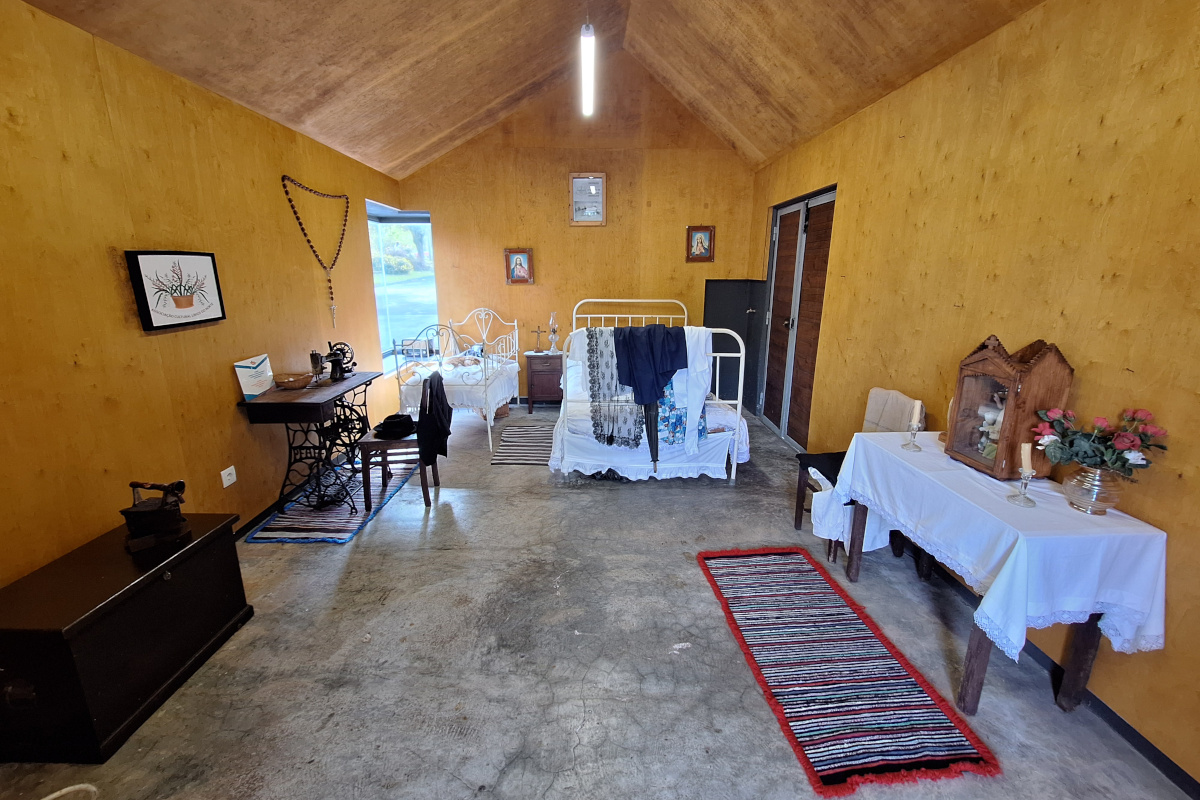
Since we left the car in the parking lot next to the theme park, it was convenient to take a short walk to Santana’s town center, where more of the charming, triangular-shaped straw‑roofed houses known as “Palheiros” were waiting for us. Most of them are now used as souvenir shops, but their fairytale-like appearance remains. These traditional Santana houses are famous for their bright colours, typically white walls with red doors, blue frames, and steep thatched roofs. They were originally built by farmers as simple rural houses, with the thatched roof extending almost to the ground to channel rainwater away from the roof. Some of the original houses date back to the 16th century, although most of what you see today are reconstructions or preserved examples. The area is well-maintained, surrounded by beautiful gardens, and the mountain views all around are incredible.
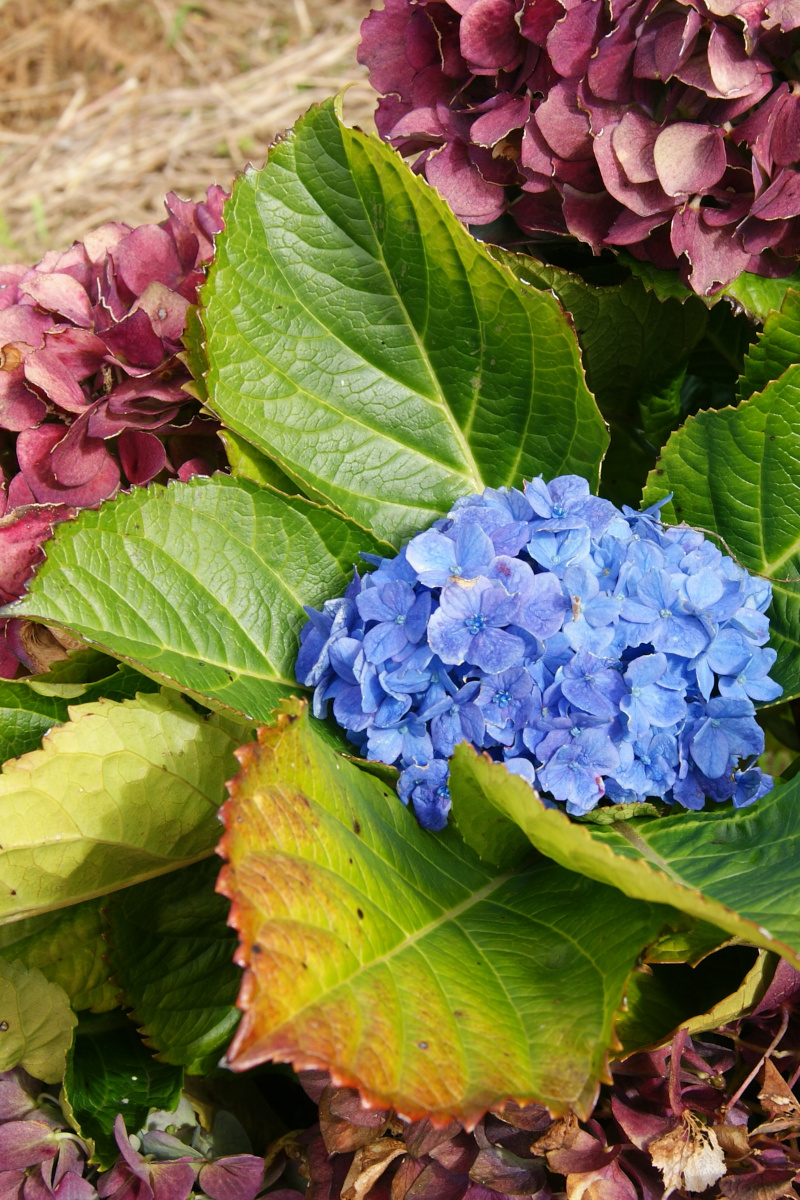
We also tried to find a place serving prego no bolo do caco, but many of the well-reviewed spots were closed, and the one that was open had run out of the special bread rolls, so unfortunately, we couldn’t try it there. I remember standing in this small bar, watching the news on TV, footage of the floods that had just happened in Valencia, a city we had visited a few months earlier (see more details here). On the way to a nearby bakery, we spotted one house which looked like the typical colorful Palheiros but was entirely brown, and we wondered if that might be a more original or unpainted version. There’s also another house close to the bakery Delícias da Bia that you can apparently visit, it’s a private home whose owner opens it for tourists and explains the family heritage. There’s no entrance fee, but donations are welcome (unfortunately, we didn’t enter inside).
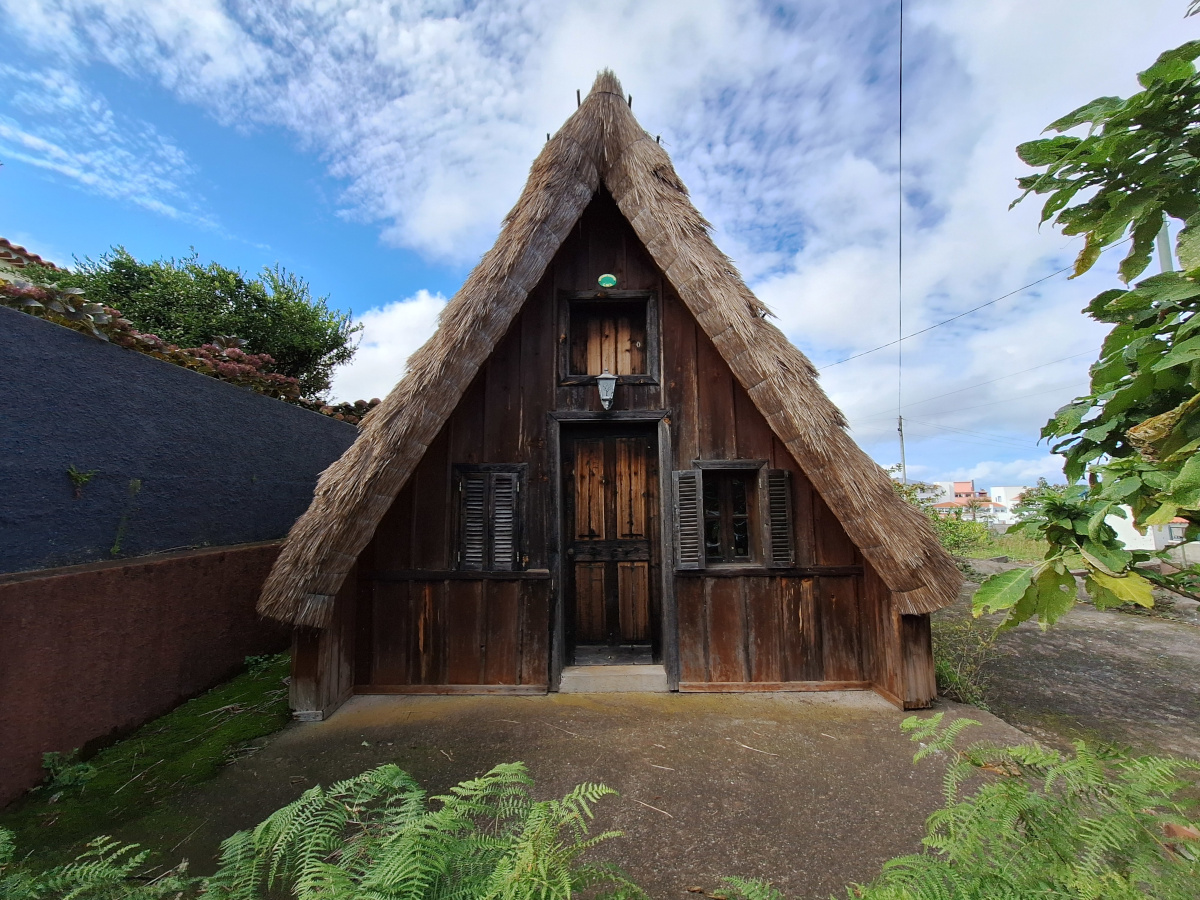
Overall, Santana is a great quick stop while exploring the nearby region. However, the area around the tourist information center can be very crowded, so we’d recommend walking a bit further, toward the church and then to the bakery to see a more authentic and peaceful side of the town beyond the few houses clustered around the main square and to try some baked goodies!
After leaving Santana, we decided to stop at Miradouro do Guindaste. There are two glass platforms extending over the cliffs from where you can watch the waves crashing. We liked it more than Cabo Girão that also had glass skywalk that was higher above the water but glass was scratched so much that view did not excite us and crowd was overwhelming. We didn’t see many people here, but there isn’t much around the viewpoint so tourists just stop for a couple of minutes and leave. We arrived early in the afternoon and had no trouble finding a spot. Take a few extra minutes to explore the cliff edge trails, the views of the coastline are stunning.
We ended our day with some quiet time on the beach, Calhau da Lapa. We parked the car and started following a path that seemed to be an old one, apparently no longer in use, which we realized as it got worse and worse, overgrown by huge cactuses and eventually leading through a deep gorge with water. Luckily, the riverbed was dry enough to cross, and after a bit of an adventure, we rejoined the official trail, which we used for the way back. That one was much easier and ended near a small bridge. On the way, there was a tall but narrow waterfall, perhaps smaller than usual due to the lack of rain in recent days, surrounded by a huge number of cactuses with visible rainbow in front. The views were amazing, and you could see the beach far below in the distance. The surrounding area was full of cactus-covered slopes. The beach is not easily accessible, very steep stairs leading there with about 160 meters of descent, but the reward is worth it.
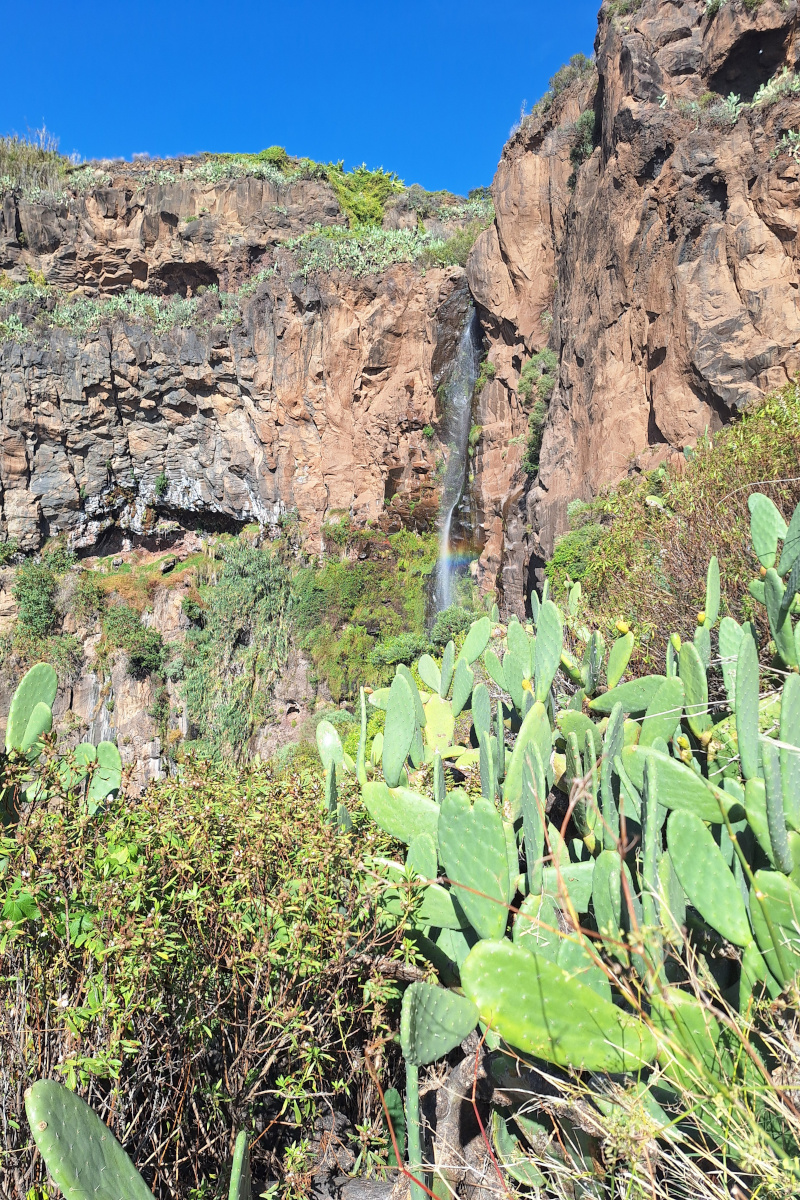
Beach looked deserted, all the cafés and cave houses were boarded up, and there were just a few people sunbathing. It’s possible to swim in the crystal-clear water, but swimming shoes are recommended due to the huge and sharp rocks. A concrete pontoon with a ladder gave easy access to the sea. There were plenty of cool-looking crabs, but they hid so quickly, reacting to even the slightest movement, which made it challenging to take photos of them.
This remote and peaceful location, not overcrowded, with clear water and plenty of crabs, was a perfect last stop for the day. After the walk back up, we hit the road toward Funchal, returned our rental car, and treated ourselves to a well-deserved dinner in the city.
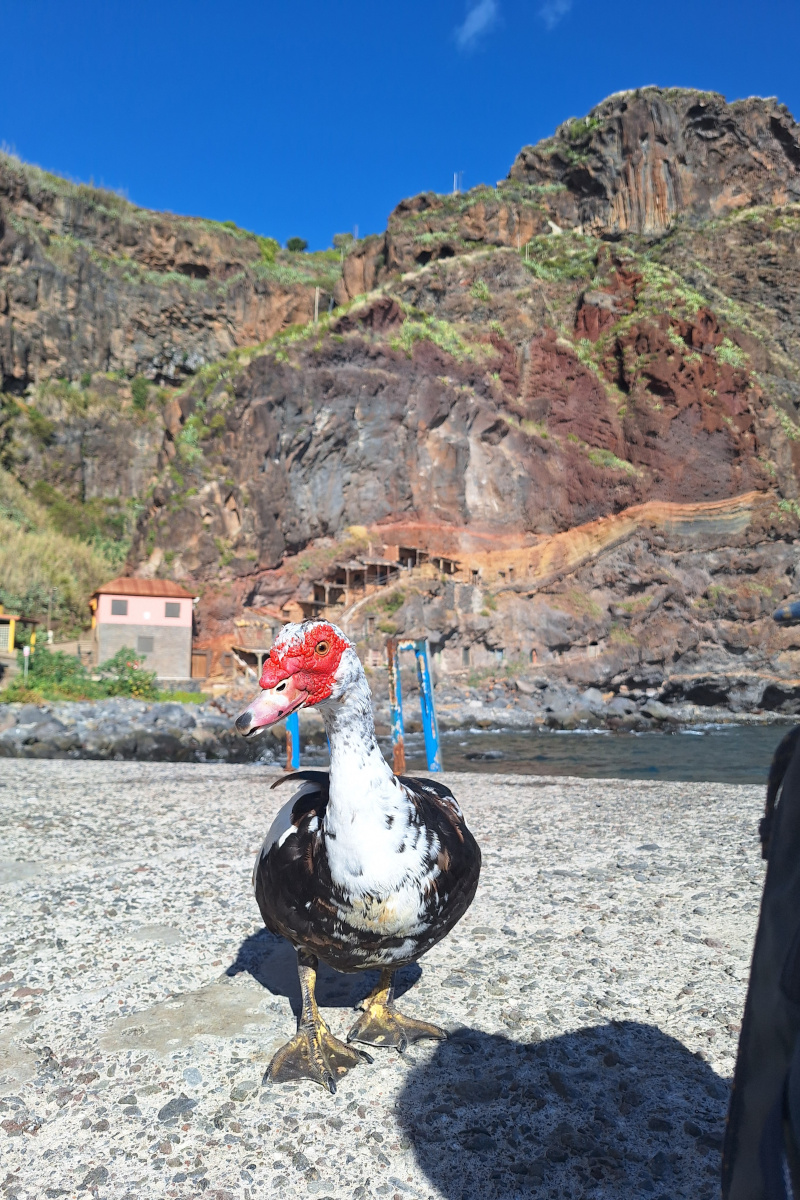
Practical info:
-
Official website to check if hiking trails are open after the wildfires that occurred during the summer of 2024.
-
Tickets for paid hiking trails can be bought online on this website. From January 1, 2025, non-residents will need to pay to hike on over 30 routes managed by the Institute of Forests and Nature Conservation (ICNF) in Madeira. These are basically all hikes marked as PR.
-
At the time of our visit, only the section from Achada do Teixeira to the Casa de Abrigo do Pico Ruivo shelter (2.4 km) was open, while the total route is 2.8 km. More information can be found on the official website The final part, which offers the most spectacular views, was closed. The path was blocked by a high fence, but most people were illegally bypassing it along the slope, despite the risk of a €2,500 fine. However, there were no park rangers in the area. Rangers were only present at the parking lot, checking the €3 entry tickets.
-
Parque Temático da Madeira – Basic entry fee is €3. Additional activities for children cost €3–4 each, or there’s an all-in pass available for €12. A large, free parking lot is located right next to the park (we left our car there and walked to the city center, just 520 m to the town hall). Note: there’s an extra fee for using the restrooms (€0.50). Visiting the park takes about an hour and a half.
-
Miradouro do Guindaste - small viewpoint with free parking and public toilets available.
-
Calhau da Lapa - We parked along the road near the bridge where the Caminho do Passo trail begins. Currently, the path to the beach is closed due to falling rocks (according to recent Google Maps reviews from spring 2025). There are no facilities near the beach; all cafés and cave houses are boarded up. The trail is very steep, with about 160 m of descent so the climb back up can be really exhausting on warm days. (GPS Coordinates of parking spot: 32.663977, -17.033297)
-
Bakery - Delícias da Bia
Address: Avenida D. Manuel Marques da Trindade n°28, Santana, Portugal
Subscribe via RSS
